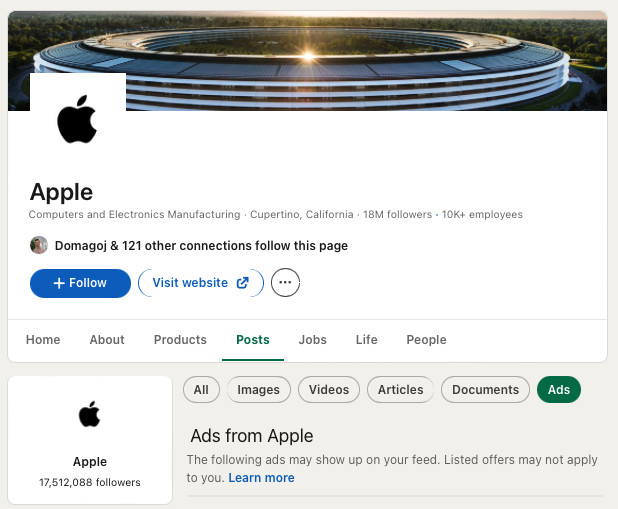Keep your friends close and your enemies closer.
Any business that hopes to succeed in its respective industry needs an in-depth knowledge of its competitors. By understanding your competition, you can better position yourself in the market and provide more value to your target audience.
Read Competitive Analysis: All You Need to Know
This blog will explain why competitive landscape analysis is crucial to your overall business strategy and teach you how to perform one in five steps.
Why Is a Competitive Landscape Analysis Important?
Why do you need to care about what your competitors are doing?
Isn’t it enough to understand your customer’s needs and wants and focus solely on creating products or services that meet them?
The truth is your business doesn’t operate in a vacuum. Your competitors’ activities impact your market position. That’s reason enough to keep an eye on them. Here are some benefits you can expect from performing a proper competitive landscape analysis:
- You identify the types of products and services they offer, compare them to your own, and make strategic decisions to improve your offering.
- You identify their weaknesses. You can exploit weaknesses to help yourself gain a larger market share.
- You identify their strengths, allowing you to make plans and decisions to protect your business and limit any adverse effects it may have.
- Knowing what your competitors are doing increases your industry knowledge and paves the way for making informed decisions and exploiting market opportunities.
- Competitive insights can help you identify market gaps you can fill for a competitive edge.
- It helps you understand your business by allowing you to reflect on what makes you different. Having a Unique Selling Point (USP) solidifies your market position.
- You can learn to emulate their wins and, crucially, learn from their mistakes (which is less costly than making your own), especially when it comes to devising a marketing strategy.
Now that the importance of monitoring your industry competitors is clear, let’s identify exactly how to do it.
Read 5 Easy Steps to Conduct a Competitor SWOT Analysis
Step 1: Identify your key competitors
To begin a competitive landscape analysis, you need to define who your competitors are. There are four types of competitors you need to be aware of.
Direct competitors
These are businesses that offer the same products or services as you. They are targeting the same customer base and likely in the same region.
Example: Samsung is Apple’s direct competitor because they target the same customers with similar product offerings. Both offer smartphones, tablets, smartwatches, headphones, and so on. They can’t share customers. For example, if you own an iPad, the chances are you don’t also own a Galaxy Tab.

Indirect competitors
Indirect competitors don’t make the same product/service as you. But what they sell solves the same problem you’re trying to solve for your customers. Naturally, this is someone you need to keep an eye on.
Example: An indirect competitor of the popular and premium notepads made by Moleskin would be the suite of digital writing apps offered by tablets.
They’re not the same thing, but potential customers would review the pros and cons of traditional writing vs. digital writing before purchasing. That’s why when Apple Pencil and similar products became popular, Moleskine started offering notepads that converted handwritten writing into a digital format.

Secondary competitors
You won’t be in direct and fierce competition with secondary competitors. Some of their offerings may overlap with yours, but those overlaps don’t constitute either of your primary offerings.
Example: Apple’s iCloud versus Microsoft’s OneDrive. Although the pair is a direct competitor in hardware, their storage systems aren’t in direct competition. In fact, whoever buys their hardware would naturally use their storage systems. As a result, substitute competitors aren’t as important as others.
Tertiary competitors
This is any company that might compete for your target audience in a broader sense.
Example: IKEA is Walmart’s tertiary competitor regarding home furnishings. If someone wants to buy home decor, they have both options. However, IKEA isn’t likely the first company that comes to mind if you were asked to list Walmart’s competitors.
Now that you know the types of competitors you need to analyze, how do you find them?
- Use Google. For example, if you sell luxury furniture, you can search for keywords like “luxury furniture” or “high-end furniture.”
- Use social listening tools to track industry-specific keywords. Similarly, use SEO apps like Semrush or Ahrefs to see which companies are trying to rank for the same keywords as you.
- Attending industry-specific events and conferences is a great way to identify new and emerging competitors.
- Browse online business directories.
Step 2: Gather information about your competitors’ offerings
Now, it’s time to start collecting data on products/services your competitors offer.
Their product/service offering
Understanding what your competitors are selling, including any unique value propositions or deficiencies in their products, can help you identify gaps in the market that your business could fill.
It also allows you to benchmark your products against theirs to ensure you remain competitive in terms of price, quality, and features.
Aside from what they sell, get a good grasp on elements related to their offering, such as:
- How good their customer service and support is
- Their manufacturing process
- Product range and depth
- Distribution channels
Pro tip: Use Trustpilot or Google Reviews to further understand your customer sentiment analysis. For example, you might find competitors repeatedly failing on their shipping promises. You can then review and refine your logistics strategy to gain a competitive edge.
Read How to Conduct a B2B Competitive Analysis

Pricing structures
Collecting data on their pricing structure helps you understand where your products/services fit.
You can gauge market expectations, identify pricing strategies (such as premium pricing, discount strategies, or value-based pricing), and determine how customers perceive value in your industry. This insight enables you to position your pricing competitively, ensuring you’re neither undervaluing your offerings nor pricing yourself out of the market.
Pro tip: Competing exclusively on price points is a downward spiral. Why not give customers an extra reason to purchase from you?
For example, WealthUp, a well-known financial literacy blog, shares a round-up of the top 13 apps that offer “free stocks for signing up.” If your app doesn’t appear on the list, you might want to consider adding that perk to attract customers as well. Otherwise, you aren’t even in contention.
But what else can you offer to stand out from the rest? Maybe you could offer loyalty points, extended guarantees, or bundles.
At the end of the day, differentiating your value proposition is a must to build a competitive edge.
Step 3: Analyze their product/service marketing
Scrutinize how your competitors talk about their offerings. This includes:
Analyzing their content marketing
Specifically, how do they describe their product features?
For instance, it’s always helpful to focus product descriptions on their benefits to customers rather than technical features. You can also type their product name into Google to see if there are any sponsored ads and analyze their approach to Google ads.
Pro tip: Use an auto subtitle generator to swiftly transcribe webinars, podcasts, and video presentations from competitors, saving time and ensuring accuracy in gathering crucial information for your analysis.
Understand their SEO strategy
- Head over to the Google keyword research tool and put your competitor’s URLs in the search box to better understand the keywords they rank for. You can use this to inform your own strategy.
- Analyze the quantity and quality of their backlinks using Ahrefs or Majestic.
- Check out their Google My Business profile to get an idea of the quality of their local SEO.
- It’s also worth visiting their website to see how fast it loads, its mobile-friendliness, and general navigation/layout.
Through this, you can:
- Identify any weaknesses to capitalize on
- Benchmark your SEO
Examining their visuals
A picture paints a thousand words.
Examining competitor product visuals, such as images, videos, and other graphical content, provides insights into competitors’ products’ branding and aesthetic appeal.
Why is this an important part of competitive landscape analysis? It highlights how they use visual elements to attract and engage customers. Understanding these details can inform your own product design and marketing materials, ensuring they stand out in the marketplace.
Analyzing product visuals helps understand the features and benefits competitors emphasize, which can reveal what they perceive as their strengths or market demands.
Step 4: Analyze their general online presence
Aside from any content they produce for seasonal activities or new launches, competitor social media monitoring is wise.
By monitoring how competitors engage with their audience, you can uncover effective engagement strategies, assess the strength of customer relationships, and identify opportunities to enhance your social media branding.
Analyzing competitors’ content strategies — what they post, how often, and the audience’s reaction — offers critical insights into content that resonates with the target market, guiding the optimization of your content strategy to capture audience interest better.
Promotions, campaigns, and product launches shared on social media also reveal competitors’ marketing tactics and product innovation. Adapt or counter these strategies to remain competitive.
Pro tip: Did you know you can spy on your competitor’s social media ads?

Step 5: Do steps 1 to 4 regularly
Remaining vigilant about your competitors’ moves is an ongoing process. Regular monitoring allows you to:
- Take advantage of competitor’s weaknesses
- Remain relevant to your target market
- Quickly respond to market changes
- Identify new opportunities
- Reinforce your strengths
- Plug your weaknesses
Wrapping up
Conducting a competitive landscape analysis is indispensable for any business aiming to secure a competitive edge in today’s market landscape.
It illuminates your competition’s strengths and weaknesses and uncovers strategic insights that can drive your business forward.
The journey of competitive landscape analysis is continuous, requiring regular monitoring to stay ahead of market shifts and competitor moves.
Tools and practices like those offered by Determ are invaluable in this endeavor. With their cutting-edge media monitoring and data analytics tools, you can effortlessly keep track of your competitors’ activities, analyze market trends, and adapt your strategies with precision.
Author bio: Arif Bharakda is a versatile writer passionate about marketing, technology, and B2B insights. With a keen interest in personal growth, Arif brings a relatable perspective to complex topics, making them accessible to all readers.


